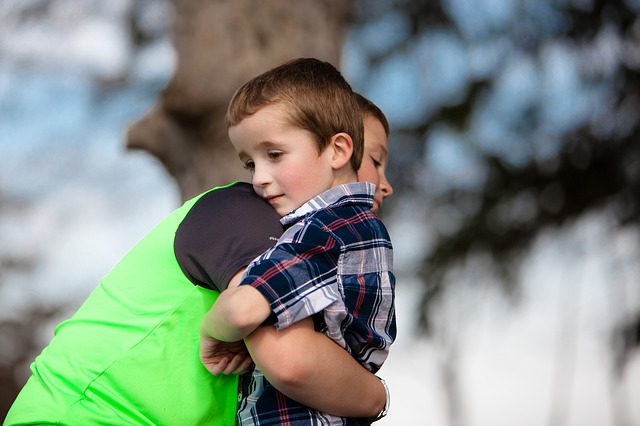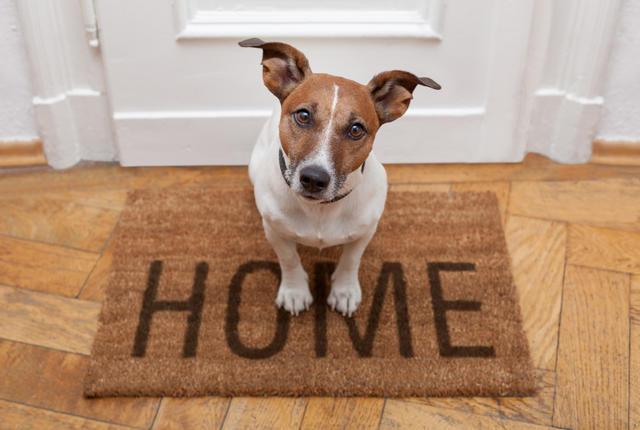Life on Mars has been proven to be a reality. Even before then, we’ve dreamt of what it would be like to one day experience Mars. Recently, NASA posted dreamy illustrations of an imagined future on the planet. In one picture, an astronaut stands on dunes in her spacesuit and with a dog at her side.
A History of Dogs in Space
While NASA isn’t planning on sending any dogs to Mars until the 2030s, space organizations have sent dogs to space before. In the 1950s and 1960s, the USSR sent dogs into capsules and launched them into the sky. While the canines weren’t sidekicks for the aeronauts, they were subjects to test launch systems before humans did. The United States used dogs to research during similar tests with several species of monkeys.
During these training sessions, engineers dressed dogs in spacesuits and kept them in small boxes for days, even putting them through rocket-launch simulators, very sadly. One dog, Bolik, managed to escape before his scheduled flight. Russian engineers faced a strict deadline and then went outside to find a stray and stramp him in. They named the dog ZIB, a Russian acronym which meant ”substitute for the vanished Bolik”. Luckily, the dog completed the mission and returned to Earth safely. However, that was merely a sub-orbital flight which stops short of looping Earth.
The first dog to really go to space was Laika, a three-year-old mutt, in 1957. Laika remained in orbit for five months, circled the world and then plunged back into Earth’s atmosphere. Unfortunately, Laika didn’t survive because the engineers didn’t plan for a safe return; the capsule was originally designed to run out of oxygen within a week. According to sensors embedded in her skin, Laika’s heartbeat tripled from its normal rate during takeoff and she breathed frantically. She died not long after, probably due to extreme temperatures in the overheated capsule.
Over the decades, many dogs circled the Earth but returned alive. Then, eventually so did humans. Then, dogs were safe of being tested on for further space experiments. A poster from NASA suggests that, unlike Soviet dogs, canines that were sent to Mars wouldn’t be used like lab animals, but sent with humans as valued companions.
Life on Mars
But a life on Mars for a dog would be miserable. The journey would start with a scary rocket launch. Passengers often feel four times the weight of Earth’s gravity pressing down on them. The experience is stressful even for many of the best-trained astronauts. According to Clive Wynne, a psychology professor at Arizona State University, he mentions it would be way more frightening for a dog who couldn’t comprehend what was going on.
In an article with the Atlantic, Wynne ponders how his own dog, Xephos, would react to a space mission. He says his dog wouldn’t want to go to Mars and when confined in a small space and subjected to loud noises and sudden movements, she would convince us that this wasn’t something she wanted to do.
Additionally, advancements in technology to create palatial spaceships like the USS Enterprise is several years away. The first crafts to travel to Mars will be small and packed with only essentials like life-support systems. If astronauts have little room to move around, they won’t have much room to play catch with their dogs.
The ride to Mars would also be difficult on the bodies of astronauts, as well as dogs. Plus, spaceships can’t create artificial gravity which keeps our feet on the floor.
Without gravity, fluids in our bodies, including a dog’s, float to the head and congest them. Bones and muscles thin out and eyeballs squish, blurring vision; scientists are still trying to figure out this mystery. Without Earth’s magnetic field, passengers would be exposed to radiation from space which increases the risk of cancer.
Humans can volunteer for this dangerous experience, but their dogs shouldn’t be allowed. Wynne mentioned that “it would be inhumane to take a dog on a spaceship.”
On Mars, the challenges that humans and their dogs face would only continue. The air in the planet’s thin atmosphere is unbreathable and the soil is toxic. The gravity, about one-third that of Earth, would still be havoc-wreaking most large life forms. Dogs would likely live in a small habitat with their humans, exploring outside in a spacesuit.
NASA has decades of experience in manufacturing spacesuits so designing a suit for dogs wouldn’t be a challenge. Humans would communicate with their dogs via radios inside a fabric hat featuring a microphone at the ear, so they could receive commands and reassurances. A microphone at the mouth allows humans to hear their bark. It all seems a bit unnecessary, but unfortunately it would be the only way to survive on the planet.
A major problem would be the dog’s experience inside these spacesuit, or “Snoopy Caps” which circulate the same air repeatedly. Dogs have about 300 million olfactory receptors in their noses. In contrast, humans have about 6 million. They love to sniff just almost everything; they can tell when their humans feel sick. These enclosed world within spacesuit would be stifling, affecting their physical and mental health.
In all, a life on Mars would be inconvenient and strange for a dog and we shouldn’t risk making our beloved pets uncomfortable, especially as we figure out how to go to space.





